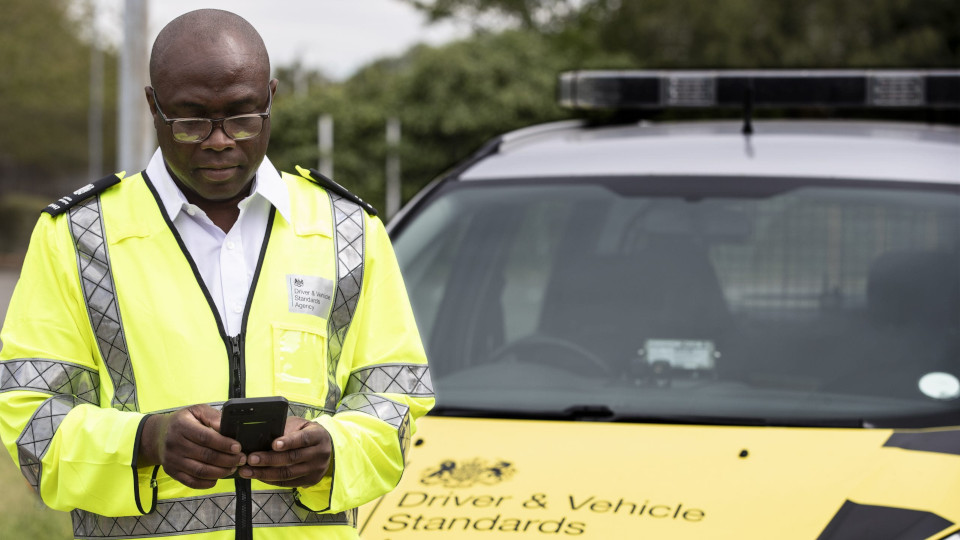Vehicle weights on a Standard B car licence
The law says that people can drive a minibus on their standard B car licence if the maximum authorised mass (MAM) is 3500kg or under (other conditions apply, see below). However, there is a specific clause that says this weight limit can be increased by 750kg for disabled passengers’ specialist equipment such as a wheelchair ramp. gov.uk/driving-a-minibus
During a Green Light Review at a school Rivervale Minibus noted that B category licence holders were driving minibuses with a plated MAM of 4100kg – these were the new 14-seater Ford Euro 6 minibuses, the previous Euro 5 models had been plated at 3500kg.
Rivervale therefore advised the school that their drivers needed a D1 entitlement to drive these vehicles.
The school’s interpretation of the law was that because the gross weight of the vehicle with its wheelchair ramps was less than the 4250kg limit it didn’t matter that the plated MAM was over 3500kg. The school’s interpretation was initially supported by expert advice that the law was open to interpretation and to carry on driving with the car licence unless informed differently.
However, on further enquiry the same expert was given definitive guidance from the DVSA that they passed on to both the school and Rivervale. The DVSA take the view that the whole of the 750kg must be attributable to the specialised equipment.
Holders of category B may drive a small bus which, when laden with the heaviest load which it is constructed to carry, weighs –
- Not more than 3.5 tonnes, excluding any part of that weight which is attributable to specialised equipment intended for the carriage of disabled passengers, and
- Not more than 4.25 tonnes otherwise.
(Section 18 of the Transport act 1985, as amended by Schedule 3 to the Driving Licences (Community Driving Licence) Regulations 1996).
If the vehicle is plated at 4.25 tonne then 750kg must be attributable to the specialised equipment. If the vehicle has not been plated at 4.25 tonne then it would still have to adhere to the 3.5 tonne maximum weight.
The permit holder and/or driver would need to demonstrate clearly that the additional weight is due to the specialised equipment. For example, ramps need to fit securely somewhere onto the vehicle and be of appropriate size to allow the wheelchair to enter and leave the vehicle.
Following this definitive advice from the DVSA we want to encourage all schools to be aware and check the plated MAM of their vehicles, and any they may be considering purchasing, to ensure they are driving them with the right licence and are using the weight allowance (from 3500kg to 4250kg) for specialist equipment only. And, that this specialist equipment is fit for purpose, is left in the vehicle and that they can demonstrate the need and use of this equipment if asked. i.e. that they have disabled pupils.
Finding the plated weight or MAM of your minibus
The MAM is the weight of a vehicle including the maximum load (passengers, driver, luggage) that can be carried safely when it’s being used on the road. This is also known as the gross vehicle weight (GVW) or permissible maximum weight.
The plate is sometimes called the chassis plate or VIN plate and is usually in the door frame, under the bonnet or in a front footwell and looks like the image below. The MAM is always the second largest weight, in this case, 4100.
What is your school’s interpretation?
The other area for interpretation as mentioned that also has relevance to vehicle weights is that under a Section 19 Permit drivers of a vehicle plated under 3500kg (4250kg for specialist equipment) can do so on a Standard B licence IF they ‘receive no payment or other consideration’, so are essentially volunteer drivers.
Category B entitles them to drive a small bus but only if all the following conditions are met:
- They have held a full category B car licence for at least 2 years
- They receive no payment or other consideration for driving other than out-of-pocket expenses
- The vehicle has a maximum gross weight not exceeding 3.5 tonnes (4.25 tonnes including specialised equipment for the carriage of disabled passengers)
Many schools interpret this to mean that because teachers aren’t hired as drivers, they are volunteer drivers. There has never been a legal test case but some councils, like Hertfordshire County Council, have sought specialist legal advice and been advised that as employees teachers are not volunteering so require a D1 entitlement.
In Rivervale’s recent experience schools faced with this interpretation got upset and indignant because they had been sold lightweight 17-seater minibuses (under 3500kg) on the premise that their staff would not need D1 entitlement to drive them. While it is up to schools to decide on their interpretation, they need to be aware that it is the school and/or the driver who is liable for prosecution, should the worst happen, not the minibus supplier, if they were found to be breaking the law by driving vehicles without the right licence.
Again, Rivervale Minibus’ best practice suggestion is that all drivers of 8+ passenger vehicles have a D1 licence; this negates any interpretation of ‘no payment or other consideration’ as well as the issue of vehicle weights. If in doubt, please seek specialised legal advice.

